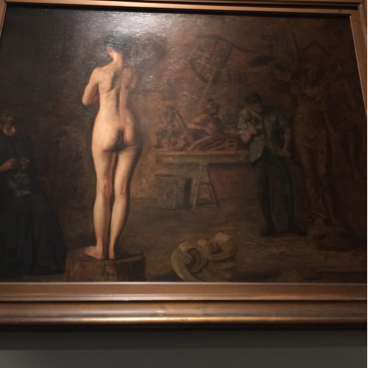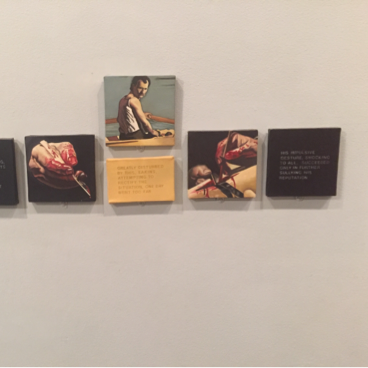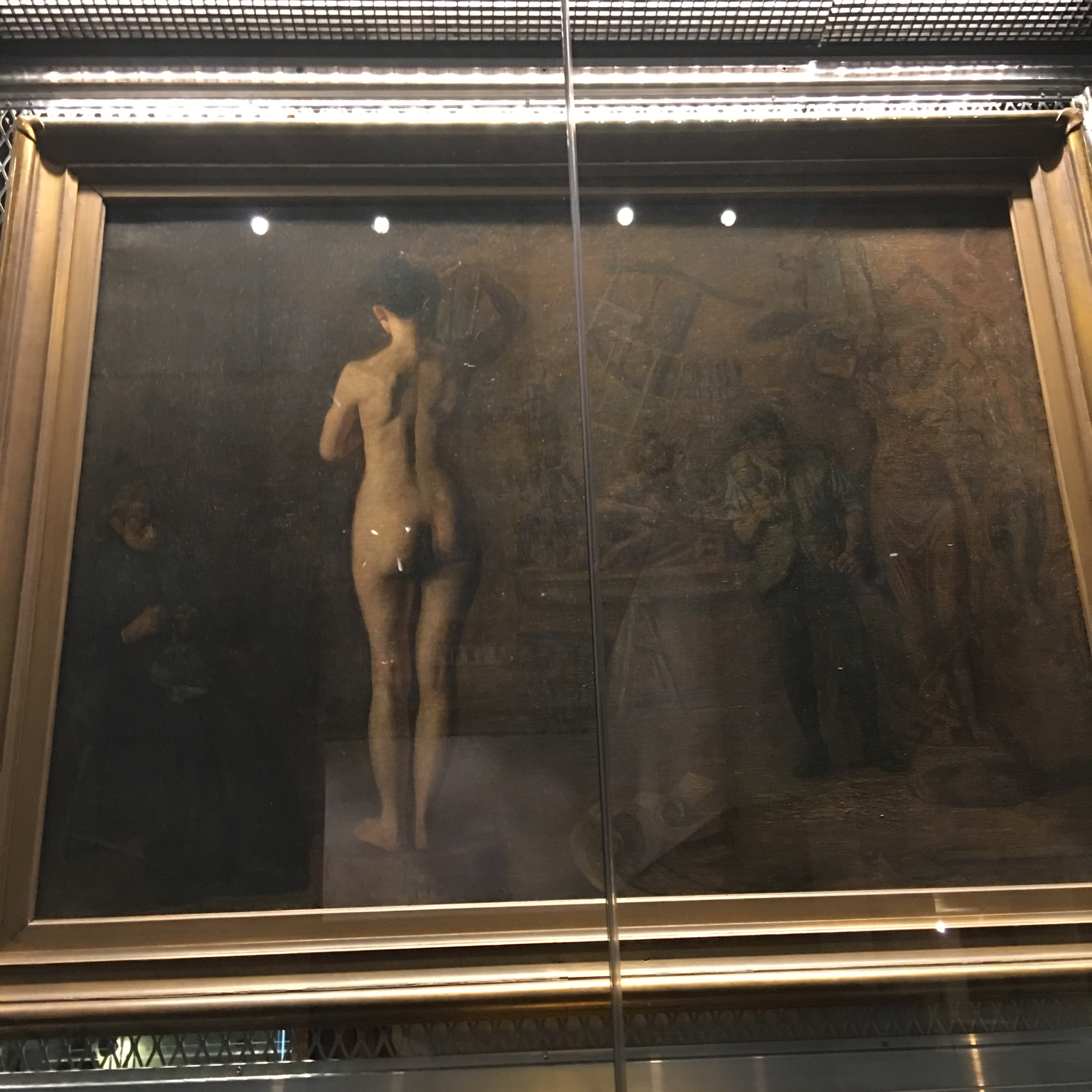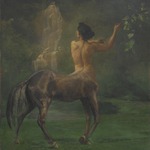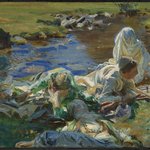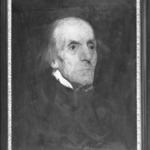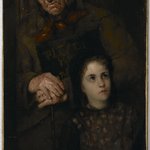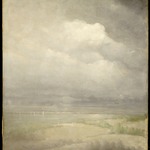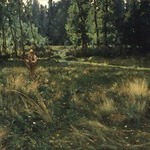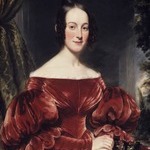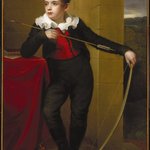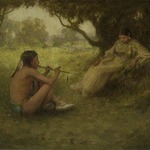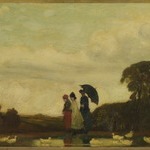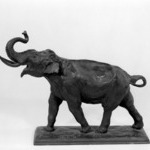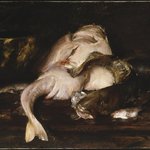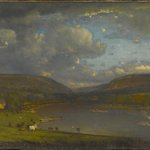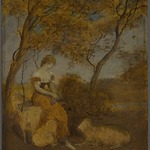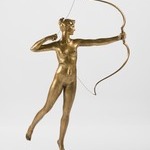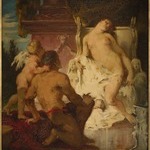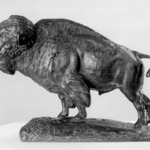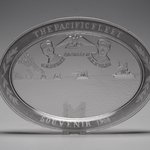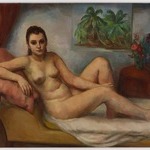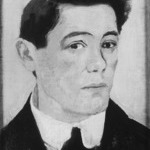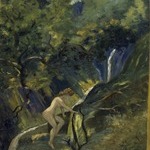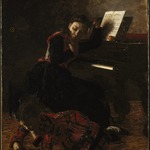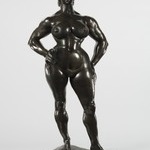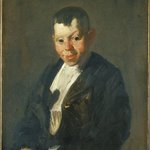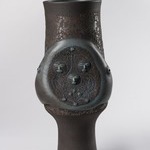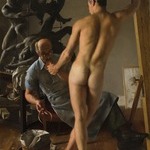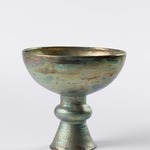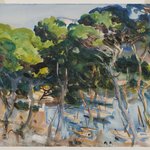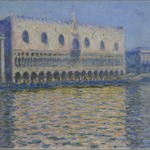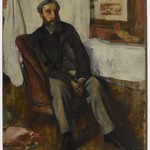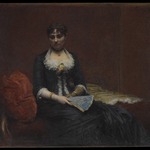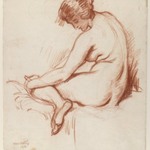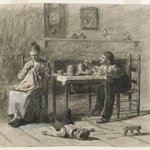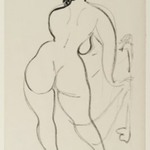
William Rush Carving His Allegorical Figure of the Schuylkill River
Thomas Eakins
American Art
On View: American Art Galleries, 5th Floor, Surface Tension
This is one of several paintings in which Thomas Eakins provided an imaginary glimpse of the Philadelphia sculptor William Rush carving The Water Nymph and Bittern, which was installed in Philadelphia's Centre Square In 1809. Although Eakins's initial motives came from a desire to restore Rush's name to the history of American art, his primary focus on the back of a strongly highlighted nude model also calls into play issues about traditional methods of art instruction. Rush was a founder of the Pennsylvania Academy of the Fine Arts, where Eakins taught for many years until 1886, when he was dismissed in a controversy about his allowing female students to attend life classes.
MEDIUM
Oil on canvas
DATES
1908
DIMENSIONS
36 1/4 × 48 1/4 × 1 1/4 in. (92.1 × 122.6 × 3.2 cm)
frame: 45 x 57 x 3 1/2 in. (114.3 x 144.8 x 8.9 cm) (show scale)
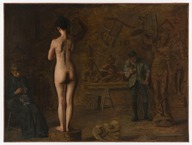


SIGNATURE
Signed lower center on scroll: "EAKINS 1908"
COLLECTIONS
American Art
ACCESSION NUMBER
39.461
CREDIT LINE
Dick S. Ramsay Fund
PROVENANCE
By 1916, inherited from the artist by Susan Macdowell Eakins (Mrs. Thomas Eakins); between 1916 and 1936, provenance not yet documented; before 1936, acquired by E. C. Babcock Galleries, New York, NY; 1939, purchased from E. C. Babcock Galleries by the Brooklyn Museum.
Provenance FAQ
EXHIBITIONS
MUSEUM LOCATION
This item is on view in American Art Galleries, 5th Floor, Surface Tension
CAPTION
Thomas Eakins (American, 1844–1916). William Rush Carving His Allegorical Figure of the Schuylkill River, 1908. Oil on canvas, 36 1/4 × 48 1/4 × 1 1/4 in. (92.1 × 122.6 × 3.2 cm). Brooklyn Museum, Dick S. Ramsay Fund, 39.461 (Photo: Brooklyn Museum, 39.461_PS22.jpg)
IMAGE
overall, 39.461_PS22.jpg. Brooklyn Museum photograph, 2024
"CUR" at the beginning of an image file name means that the image was created by a curatorial staff member. These study images may be digital point-and-shoot photographs, when we don\'t yet have high-quality studio photography, or they may be scans of older negatives, slides, or photographic prints, providing historical documentation of the object.
RIGHTS STATEMENT
No known copyright restrictions
This work may be in the public domain in the United States. Works created by United States and non-United States nationals published prior to 1923 are in the public domain, subject to the terms of any applicable treaty or agreement.
You may download and use Brooklyn Museum images of this work. Please include caption information from this page and credit the Brooklyn Museum. If you need a high resolution file, please fill out our online application form (charges apply).
The Museum does not warrant that the use of this work will not infringe on the rights of third parties, such as artists or artists' heirs holding the rights to the work. It is your responsibility to determine and satisfy copyright or other use restrictions before copying, transmitting, or making other use of protected items beyond that allowed by "fair use," as such term is understood under the United States Copyright Act.
The Brooklyn Museum makes no representations or warranties with respect to the application or terms of any international agreement governing copyright protection in the United States for works created by foreign nationals.
For further information about copyright, we recommend resources at the United States Library of Congress, Cornell University, Copyright and Cultural Institutions: Guidelines for U.S. Libraries, Archives, and Museums, and Copyright Watch.
For more information about the Museum's rights project, including how rights types are assigned, please see our blog posts on copyright.
If you have any information regarding this work and rights to it, please contact copyright@brooklynmuseum.org.
RECORD COMPLETENESS
Not every record you will find here is complete. More information is available for some works than for others, and some entries have been updated more recently. Records are frequently reviewed and revised, and we welcome any additional information you might have.


